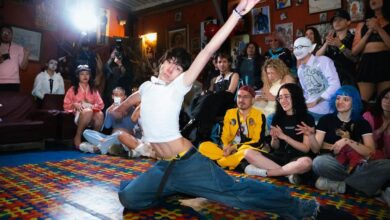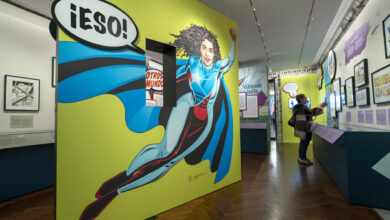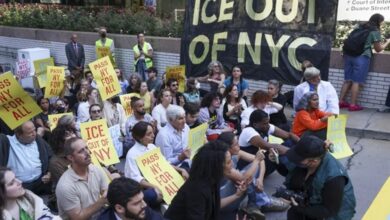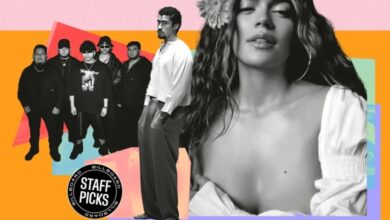Hudson Nights Burn Bright as Sunset Salsa Turns New York into a Latin Dancefloor
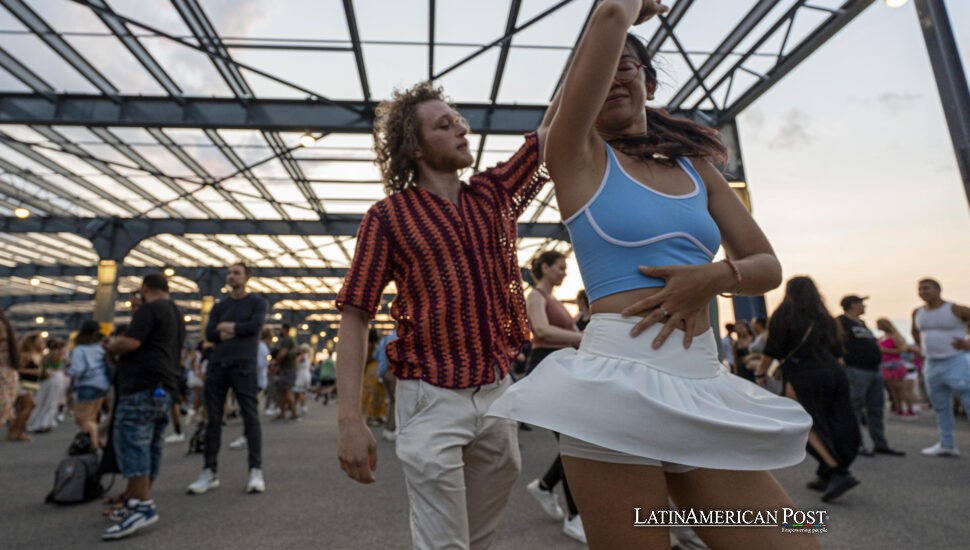
As the sun slips behind New Jersey’s cliffs, Pier 76 explodes with rhythm. Office workers, elders, and toddlers dance under the skyline in a ritual of sweat, memory, and joy—where salsa is therapy, unity, and New York’s unofficial national anthem.
From Sidewalk Demo to Riverfront Spectacle
Back in 2009, Talia Castro Pozo stood in a patch of grass in Chelsea’s 14th Street Park, boombox in hand, coaxing a curious knot of passersby to mimic her steps. There were no speakers, no banners, just a few folding chairs and her vision: to bring salsa out of sweaty nightclubs and onto the pavement, where New Yorkers could see—and feel—themselves move together.
Fifteen years later, she now commands a stage at Pier 76 in Hudson River Park, her voice amplified across an open-air arena that draws up to 5,000 dancers during peak summer nights. “It started as a community experiment,” she told EFE, “but it grew into something bigger—something alive.”
That something is Sunset Salsa, a free Thursday-night ritual that has migrated from Chelsea lawns to the edge of the river, evolving with the city’s needs. The crowd is no longer just neighborhood locals but a diaspora of rhythms: Colombian cumbia, Cuban son, Puerto Rican bomba, Dominican dembow. Salsa is the star, but it wears many passports.
Last year, a record-breaking crowd turned the pier into what Castro Pozo calls “a moving mural of the world.” Grandmothers were spinning with teenagers, tourists learning basic steps, and toddlers zigzagging under the arms of retirees executing flawless cross-body turns. “It’s a pulse,” she said. “Everyone taps into it.”
A Dance Class That Ends in Liberation
At 6:30 P.M. sharp, Castro Pozo takes the mic beneath a wide-brimmed sunhat, joined each week by a guest instructor—last Thursday, it was Bronx-born Dominican choreographer Jeremy Adam Rey. They break down the fundamentals in thirty minutes: rock step, cross-body lead, inside turn. The crowd mimics, stumbles, laughs.
But at 7:00 P.M., the training wheels come off.
A guest DJ—often a veteran from the Bronx or Lower East Side Latin scene—ramps up the tempo, cueing in Lavoe, Celia, and Marc Anthony. The center of the floor erupts with seasoned dancers flashing double turns and split-second syncopations. Newcomers linger near the edges, eyes wide, until rhythm slowly takes over. Within minutes, strangers are spinning each other into sweaty embraces under the orange sky.
“There’s no better therapy in the world,” said Ronald, a 47-year-old Chilean contractor who just returned from a six-week job. “Salsa resets my body and my brain.”
Salsa doesn’t discriminate. On one side of the pier, a woman in office heels nails a clean turn; beside her, a senior in a fedora claps offbeat with delight. A teenage couple awkwardly mirrors footwork until it clicks. By nine o’clock, sweat slicks the boards, the Hudson breeze finally kicking in like a well-earned reward.
Salsa as Citywide Pressure Valve
In a city famed for its velocity and noise, Sunset Salsa offers a kind of exhale. It’s not just a dance class; it’s a stress valve, a catharsis. Parents push strollers between dance circles. A dog in a sequined vest howls in tune with the trombones. Someone live-streams the entire thing to family in Bogotá.
Sunset Salsa doesn’t just entertain—it disarms.
It also unites generations. “Every week,” said Castro Pozo, “I see a teen try to outshine someone three times their age—and then lose. It’s humbling. It’s beautiful.”
Salsa, born out of the struggles of Caribbean migrants, still carries that echo of resilience and improvisation. And in New York, where everyone seems to be rushing toward something, it offers something rare: a moment to be completely, physically present.
Even during July’s worst heatwave—when the pier hit 90 degrees Fahrenheit—people danced. “No summer in New York is complete without this,” one dancer shouted over a blaring descarga. “This is paradise with rhythm.”
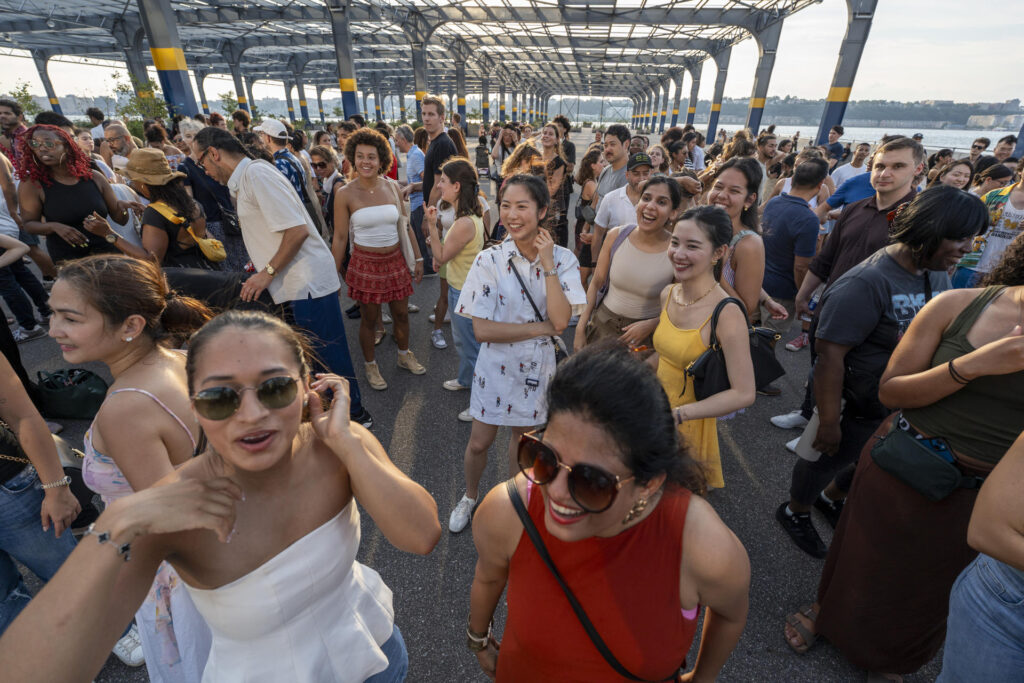
When the Sun Sets, the Rhythm Rolls On
Though the primary season wraps in August, the dancing doesn’t stop. September’s cooler air brings the event back to Pier 45, where it continues every Thursday until Halloween. Castro Pozo also organizes salsa pop-ups in Bryant Park and curates studio classes downtown. She’s starred in indie films and modeled for campaigns, but her heart remains in public plazas—where music echoes through neighborhoods, not earbuds.
“My dream,” she told EFE, “is to teach salsa history in every public school. Not just steps, but stories—how it came from hardship, from sweat, from street corners.”
It’s already happening. Teens follow TikTok tutorials to try out footwork in real life. Couples mark anniversaries under the lights. Teachers bring field trips. And Castro Pozo sees each one as a storyteller in training. “Every footfall adds a verse,” she says.
At 8:55 p.m., the DJ fades into Lavoe’s “Periódico de Ayer.” Bubbles rise from a vendor’s wand. Dancers cheer, hug, and wave goodbye. The river sparkles behind them, ferries humming back to Jersey. In twenty minutes, the pier will be quiet. In twenty-four hours, it will be a joggers’ path again.
Also Read: Mexico Shows Link Flamenco Spirit to Chavela Vargas’ Ranchera Heritage
But for two and a half hours each Thursday, it is something else entirely: a borderless, beat-fueled dance nation where no one is alone, everyone has rhythm, and the city becomes—for a moment—as warm and human as the music that moves it.
Credits: Story adapted from reporting by EFE.

